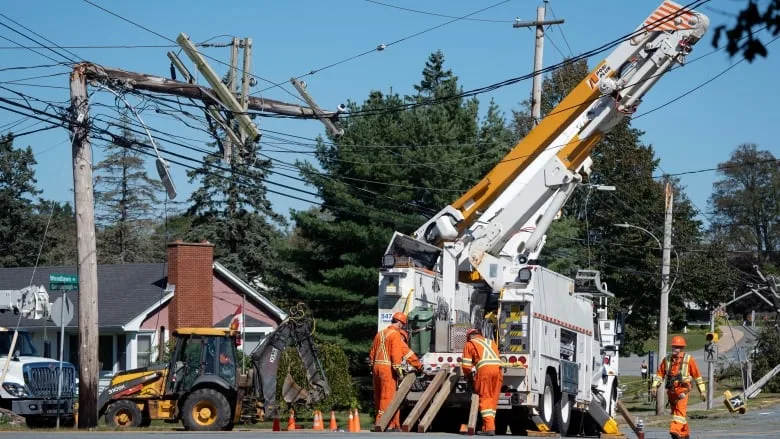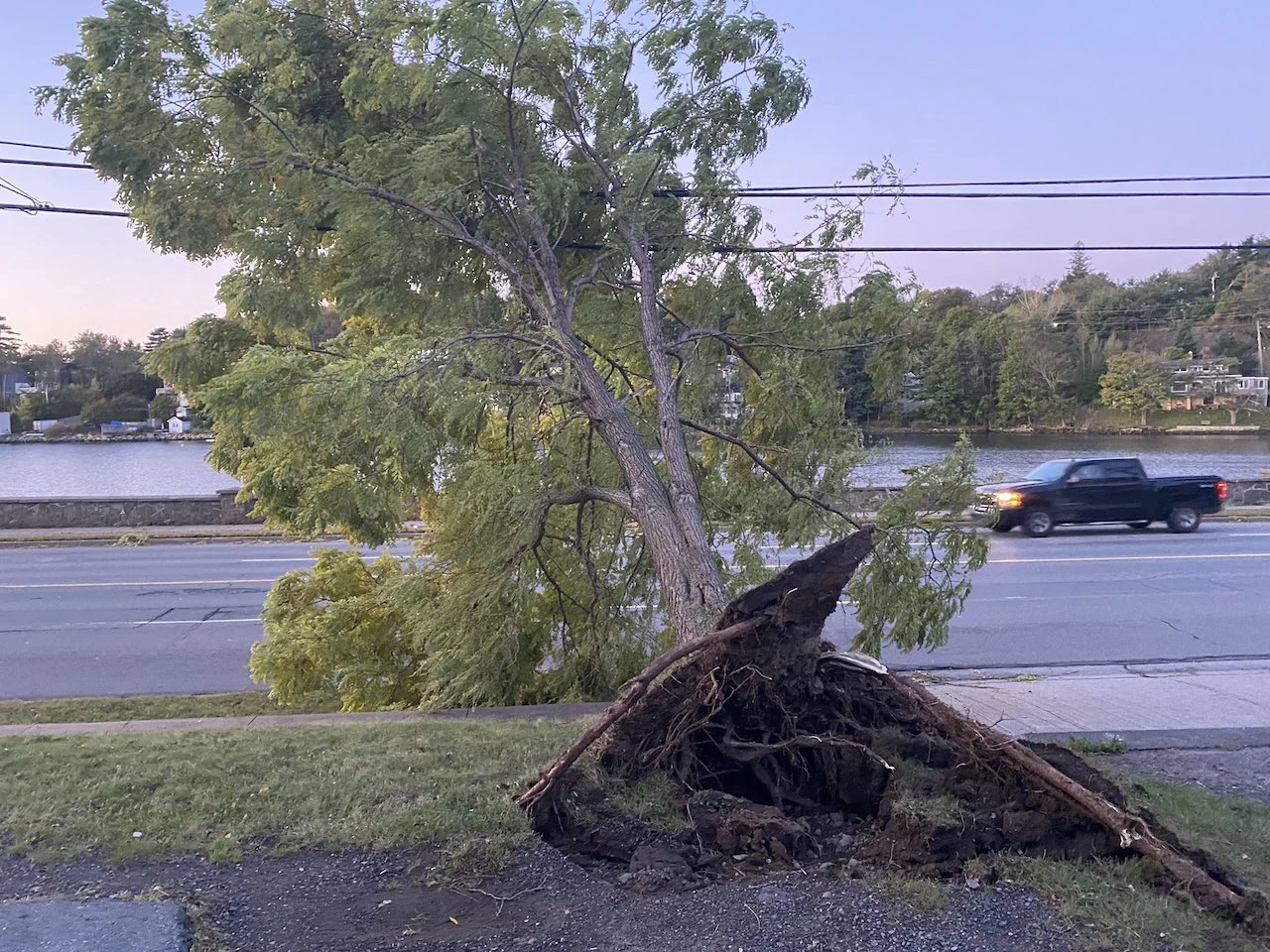
Many N.S. schools to stay closed Tuesday as province reveals Fiona relief
Premier Tim Houston announced $40 million in "immediate and long-term supports" on Monday to help those dealing with damage from post-tropical storm Fiona.
"I know this won't make everyone whole and I know it won't be as fast as some people need, but I have seen the impact," Houston said.
"I know the importance of getting this in your hands as quickly as possible and our government will do whatever it takes to make that happen. It is our job to be there for you."
PHOTOS: Arduous cleanup for Atlantic Canada after Fiona's destruction
In a news release, the province said details on these grants and how to apply for them would be available soon.
N.S. storm relief
The province also announced one-time financial assistance will be offered to eligible Nova Scotians, including:
$100 for every household that lost power for at least 48 hours to cover the cost of spoiled food.
$250 for every person that has to pay for tree or debris removal from their property.
An additional $250 on top of the existing $750 seniors care grant to help with storm reparations.
$150 to all current income assistance recipients, including Disability Support Program participants receiving income support.
$1,000 per household in emergency funding for people ordered out of their homes or who cannot return to their homes. People can register with the Canadian Red Cross by calling 1-800-863-6582 from 8 a.m. to 8 p.m.

(Nathan Coleman/The Weather Network)
The province also announced funding to support community organizations that help people, including:
A $2 million fund to assist community centres with the purchase and installation of generators
$500,000 to Feed Nova Scotia and $150,000 in total for non-member food banks in Cape Breton and eastern Nova Scotia.
$100,000 to the Salvation Army and Canadian Red Cross organizations in Cape Breton.
$100,000 in total to shelters in Cape Breton and eastern Nova Scotia to help with extra demand.
$100,000 to establish a hotel fund, administered by Cape Breton Community Housing, to provide temporary accommodations for people in shelters who cannot go back into their homes.
$150,000 to distribute support to families in need through the SchoolsPlus program. The province said the support will come in the form of grocery store cards and access to food, where possible.
WATCH: Roofs blown off homes as crews deal with tree carnage following Fiona
School closures continue
Houston said schools will continue to be closed Tuesday due to unsafe roads and power outages for:
Strait Regional Centre for Education
Chignecto-Central Regional Centre for Education
Halifax Regional Centre for Education
Conseil scolaire acadien provincial schools (CSAP) in its northern and metro groups
Schools in the Cape Breton Victoria-Regional Centre for Education are closed for the rest of the week, as is CSAP's Centre scolaire etoile de l'Acadie.
School officials in Annapolis Valley Regional Centre for Education, South Shore Regional Centre for Education, Tri-County Regional Centre for Education and CSAP schools in its south group will continue to provide updates about cancellations at individual schools, the province said in a news release.
Power outages persist
As of 4:30 p.m. AT Monday, there were more than 170,000 Nova Scotia Power customers without power, down from a high of more than 400,000 on Saturday. Nova Scotia Power has a total of 525,000 customers across the province.
Cape Breton Island and Pictou County were particularly hit hard by post-tropical storm Fiona, leaving a significant number of Nova Scotia Power customers without power. Nova Scotia Power tweeted that roads need to be cleared of fallen trees before crews can work on restoring power.

It also said power restoration is done in a specific order, starting with main lines that bring electricity from power plants into cities and towns.
Customers can view an estimated time of power restoration online.
Military personnel clearing debris
In a provincial press conference about the storm damage Monday, Rear Admiral Brian Santarpia, the Joint Task Force Atlantic Commander of the Canadian Armed Forces, said there are currently 100 military personnel in Nova Scotia, Newfoundland, and P.E.I. to help clear debris which will make power restoration easier.
He said both New Brunswick and Quebec believe they can handle the emergency with their own resources.
FORECAST: Rain and thunderstorms threaten areas severely hit by Fiona
Response units have chainsaws and heavy-duty tools and work with municipalities to move equipment as necessary.
"It's a really a case of many hands make light work, but as you say, it's better to have the right equipment," said Santarpia.
Erica Fleck with the Halifax Regional Fire and Emergency said fallen trees on personal property are the responsibility of homeowners to clean up.
She said Halifax doubled the amount of brush and trees it will pick up to 10 bundles, starting with pickup Monday.

Matt Drover, Nova Scotia Power's storm lead, said the support from across Canada is historic.
"This is the biggest mobilization that we have done in our company's history," said Drover during the press conference.
Cape Breton gas deliveries on the way
In Monday's press conference, Jason Mew, director of the incident management division at the Nova Scotia Emergency Management Office, said the Sydney Terminal's power has been restored which means Cape Breton will soon see local fuel flowing into the region again.
"Imperial and Irving have prioritized fuel deliveries for Cape Breton and Eastern Nova Scotia so it should rectify itself," said Mew about major oil companies.
"We're asking people not to make a run on fuel."
After the military completes cleaning debris around downed power lines, they will move on to clearing roads.
The other priority is to help people who are displaced return to their homes through the Disaster Financial Assistance program.
WATCH: Cleanup begins in New Glasgow where trees and powerlines are down
This article, written by Anam Khan and Anjuli Patil, was originally published for CBC News.









